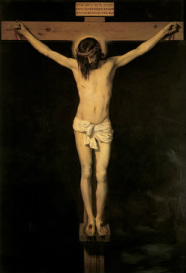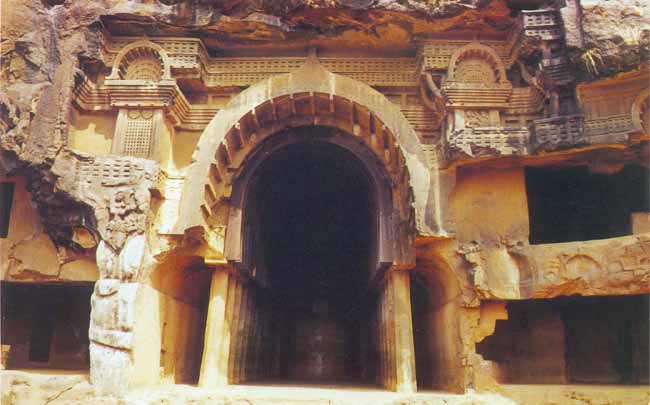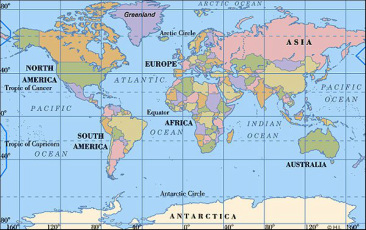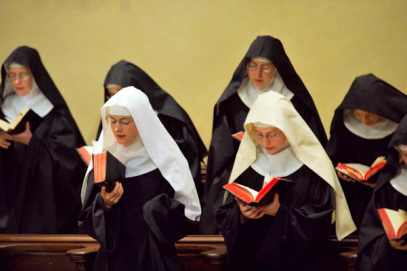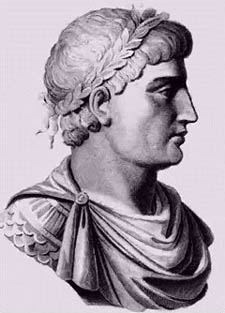AGMSPRITE Analysis
By: Jessalyn Nelson (AGMS) and Elodie Chidiac (PRITE)
Art and Architecture
Because of the new religious leaders, sculptures and paintings are made to portray them. This is similar to today because people continue to have pictures and symbols to portray their religions and religious leaders, such as Jesus and the cross for Christianity and Buddha for Buddhism, However, the ways these religious leaders are portrayed have changed over the years and are not necessarily accurate depictions of what they really looked like, such as giving Jesus different races other than Caucasion or have an overweight Buddha with an abnormal belly to "rub for good luck".
Architecture is also being constructed as a way to practice their religions. This is similar to today because people still build massive places of worship like churches for Christianity, synagogues for Judaism, or Chaityas halls for Buddhism. A major change would be that the places of worship are now more simple rather than extravagant. Over time, people's values have changed and now go for just the religion, and not to admire the architecture of the buildings. An exceeption to this observation is Judaism. Their Second Commandment states, "Thou shalt not make unto thee a graven image, nor any manner likeness, of anything that is in the heaven above or that is in the water under the earth." This states that sculptures and things of the like are forbidden and are not to be constructed so Judaism isn't asscoiated with much art or architecture.
Architecture is also being constructed as a way to practice their religions. This is similar to today because people still build massive places of worship like churches for Christianity, synagogues for Judaism, or Chaityas halls for Buddhism. A major change would be that the places of worship are now more simple rather than extravagant. Over time, people's values have changed and now go for just the religion, and not to admire the architecture of the buildings. An exceeption to this observation is Judaism. Their Second Commandment states, "Thou shalt not make unto thee a graven image, nor any manner likeness, of anything that is in the heaven above or that is in the water under the earth." This states that sculptures and things of the like are forbidden and are not to be constructed so Judaism isn't asscoiated with much art or architecture.
Geography
The spread of religions are due to close proximity to other cultures, like how Christianity originated in Rome and spread to Africa. This continues today because people with the same religion do tend to live in the same general area, such as the Mormons in Utah, Islams in the Middle East, and those who practice Hinduism mainly occupy India. This is different to today because areas are more diverse. For the majority, there is not just one religion located in a single area. New York contains over eight million people and have religions varying from Catholic to Episcopalian.
Military
The religions are now used to unify the civilizations, with the exception of Daoism, which believed that doing nothing accomplishes everything so militaries are unnecessary. Civilizations like Rome and China now have one thing that brings together all of its people making them more likely to obey government offficials and attempt to better their civilization by ensuring they always do the right thing and whatever they can to support their state. Similarities to today would include religions continuing to unify people but no necessarily in a way to create a military. This has also changed because a religion no longer unifies a single state, with excpetion of North Korea, and there are no longer daoist beliefs.
Society
Societal factors include more social mobility being available to people, because of moral improvement with Confucianism and Hinduism, more women's rights, like women becoming nuns with Buddhism, and almost everyone is affiliated with a relgion or belief. This is a continuity to today because women are still nuns in various religions and there continues to be much social mobility for people in soceity. However, this is a major change because religions and beliefs were used to maintain control in soceiy but now it is something peole do at their own will. Another major change is the idea of an atheist, a religion for no religion. It is now common for people to have no religious affiliations whatsoever.
Political
From a political point of view, any kind of religious belief was used to unify the people and thus creating a more stable society that brought the individuals together under one belief system. For instance, Theodosius made Christianity the official religion in order to bring and unify his people under one set of religious code of laws.
Religion
From Zoroastrianism which was one of the oldest monotheistic faiths, to modern day Christianity, religions and faiths have developed from polytheistic beliefs such as Hinduism to monotheistic ones such as Christianity, Islam and Judaism.
Intellect
Religions had a large impact on the intellect of other civilizations. People were more educated and thus were able to read the religious books. Interpreting the religious texts helped individuals understand them and thus apply those manuscripts in their every day life. Also, Christianity pushed individuals to become curious to the discovery of new ideas such as becoming nuns or priests and living in convents.
Technology
Religion did not have a significant impact on technology.
Economy
Religion did not have a significant impact on the economy.
Works Cited
"ART and ARCHITECTURE, Mainly." : Jewish Silver Art: Filigree Work. N.p., 27 Nov. 2010. Web. 18 Nov. 2012
<http://melbourneblogger.blogspot.com/2010/11/jewish-silver-art-filigree-work.html>.
"Indian Religions." Cultural India. N.p., n.d. Web. 09 Nov. 2012. <http://www.culturalindia.net/indian-religions/index.html>.
"Religion in New York." Religion in New York. N.p., 2010. Web. 09 Nov. 2012. <http://www.bestplaces.net/religion/state/new_york>.
Sastri, B. A. "BUDDHIST ART & ARCHITECTURE." BUDDHIST ART & ARCHITECTURE. N.p., n.d. Web. 18 Nov. 2012.
<http://indiapicks.com/annapurna/B_Buddhist.htm>.
Strayer, Robert W. "Chapter 5." Ways of the World: A Brief Global History with Sources. Boston, MA: Bedford/St. Martins, 2011. N. pag. Print.
<http://melbourneblogger.blogspot.com/2010/11/jewish-silver-art-filigree-work.html>.
"Indian Religions." Cultural India. N.p., n.d. Web. 09 Nov. 2012. <http://www.culturalindia.net/indian-religions/index.html>.
"Religion in New York." Religion in New York. N.p., 2010. Web. 09 Nov. 2012. <http://www.bestplaces.net/religion/state/new_york>.
Sastri, B. A. "BUDDHIST ART & ARCHITECTURE." BUDDHIST ART & ARCHITECTURE. N.p., n.d. Web. 18 Nov. 2012.
<http://indiapicks.com/annapurna/B_Buddhist.htm>.
Strayer, Robert W. "Chapter 5." Ways of the World: A Brief Global History with Sources. Boston, MA: Bedford/St. Martins, 2011. N. pag. Print.
